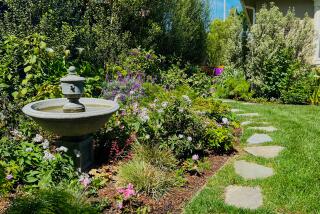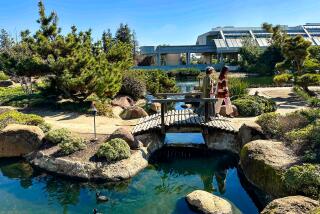Tree-lined history on Edisto Island, S.C.
Silvery Spanish moss embraces giant live oaks that line the road, touching overhead to create a cathedral ceiling. Their lacy patterns change constantly, on rare moments becoming thick enough to blot out the sun and surround the cars and passengers below in an inky netherworld. Then white light bursts through and reignites the beauty, leaving the road less scary but no less mysterious.
I’ve driven this 17-mile stretch of narrow highway over decades — at the wheel, or in the back seat with my parents in front, or piled into a car with teenage friends — on the way to Edisto Island.
I drove it again recently, just after South Carolina Highway 174 was designated a National Scenic Byway, for the beauty of its dazzling green-gray canopy and for the island paradise through which 174 cuts. Less than an hour from Charleston and Beaufort, S.C., and barely two hours from Savannah, Ga., Edisto, of all the barrier islands, is the one to visit. The most steeped in history, it’s also the most unspoiled; nearly half of Edisto is classified as protected natural land. Be warned: Unspoiled also means no hotels.
Fortunately, island rentals abound, creating a sense of neighborliness as visitors and Edistonians live side by side. Choose whatever suits your fancy, from cottages to condos on the beach, along the frontage road, tucked into coastal neighborhoods or facing the rivers, creeks, estuaries and marshlands that wind and curl through the island. You’ll glimpse those waterways as you cross the bridge (once wonderfully old and wooden, now modernly sleek and safe) and descend onto the island. Catch your breath — if you can — as the golden light dances across the marsh grass.
THE BEST WAY TO CHARLESTON AND EDISTO ISLAND, S.C.
From LAX, connecting service (change of planes) to Charleston is offered on Delta, United, US Airways and American. Restricted round-trip fares begin at $268.
But don’t go any farther without a map. This island is for exploring, and Edisto has been mapped to death (with varying degrees of accuracy and detail from 1850 on), and the results are available just about everywhere. A good first —and last — stop is the Edisto Bookstore. On the way in, pick up maps and browse the numerous books about the island because you’ll want to buy one on the way out as a reminder of its stories, historic, romantic and often ghostly.
A car will get you most places, but biking and hiking are better. For cycle rentals, Island Bikes is a friendly shop across from the SeaCow Eatery, where bourbon pecan, key lime and peanut buttermilk are among the pie choices. The island boasts several good restaurants and a Piggly Wiggly grocery. Renters who prefer to cook at home pull up daily to Edisto Seafood as the fishing boats come in (jumbo shrimp, $8.95 a pound).
Just past the Piggly Wiggly, the highway runs out at the Atlantic Ocean. Turn right. Welcome to the town of Edisto Beach. For swimmers and sun lovers, every block offers public access to endless beaches filled with an eye-popping variety of shells (don’t forget the flip-flops). Away from the beach area, everything else is called Edisto Island — and that’s where history lies.
By the early 1800s, English settlers had made themselves at home on Edisto. They took up farming, failed miserably at indigo, hit the bull’s-eye with cotton (a long, silky staple, once considered the finest in the world), and became suddenly and unimaginably wealthy. Many of their homes — with names such as Prospect Hill, Brooklands and Sunnyside — still stand. As kids, we roamed the roads leading to them, even made our way through the brambles to find one of the deserted houses that became our secret, as it eventually lost its portico and turned its face inward to the forest.
But others caught our young imaginations, palatial homes restored by new owners or descendants of the original builders. Windsor House can be seen from Russell Creek bridge, where there’s room to pull over for an unobstructed view across the river. The others are hidden on now-private roads. Luckily for visitors, Pink Van Tours has access to several of the grand plantation homes, including Seaside and Cassina Point. The guides are native Edistonians, who will delight you with their boundless knowledge on a tour that’s rich in island lore and includes a pause for lemonade and homemade benne seed (sesame seed) cookies. Volunteer staffers at the homey Edisto Museum offer historic insights, along with Southern hospitality.
No guides are needed for hiking and biking, and there are beautifully marked and maintained trails galore in the 1,200-acre state park and the 4,600-acre Botany Bay Plantation, a treasure trove of history that includes the remnants of two grand houses, Seabrook and Bleak Hall. Sketches of Bleak Hall at the Edisto Museum will take your breath away; now all that remains are several of its outbuildings, including a perfectly preserved ice house. This Greek Revival structure from the 1840s boasts interior walls constructed of tabby, a mixture of lime, sand, water and oyster shells. (Tabby was unknown outside the South of the 18th and 19th centuries, and historians still debate its origins.)
Of the many Edisto trails, my favorite leads to Botany Bay Beach, two miles of uninhabited oceanfront that can be reached only on foot or by bike. Take a picnic and spend the day among the skeletal remains of live oak trees, uprooted during hurricanes and blackened by time, creating a beach of exotic beauty.
Much of the state park fronts the ocean, but on the jungle side, hiking includes another favorite trail that ends at a pile of bones and shells. It’s known as Indian Mound, left by Edisto Indians who beat the Brits to the island by about 4,000 years.
For the modern-day visitor, there’s seasonal hunting at Botany Bay Plantation, boating on most waterways and fishing just about anywhere, license required and readily available. And, oh, yes, if you must, there’s a golf course.
travel@latimes.com
More to Read
Sign up for The Wild
We’ll help you find the best places to hike, bike and run, as well as the perfect silent spots for meditation and yoga.
You may occasionally receive promotional content from the Los Angeles Times.






